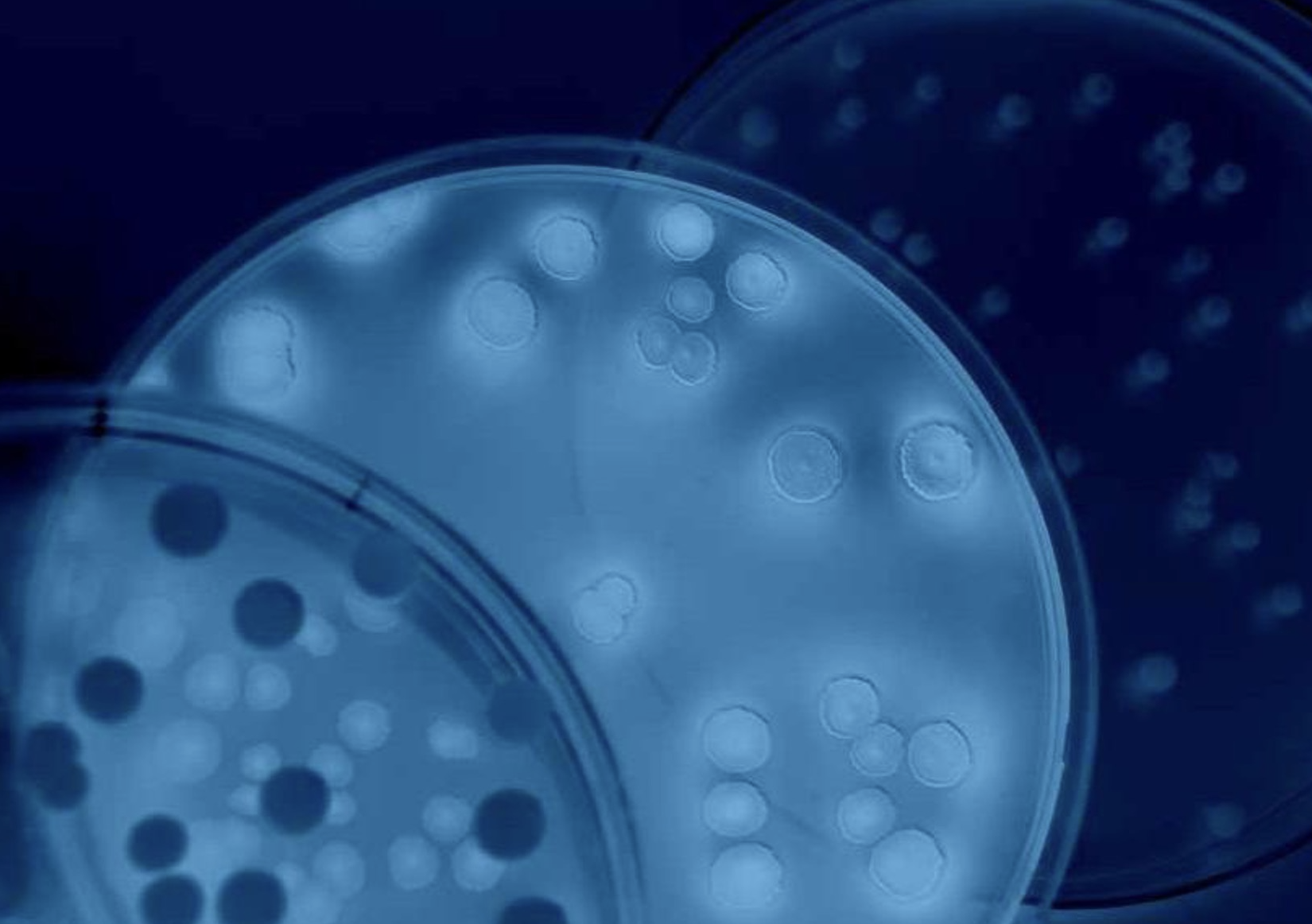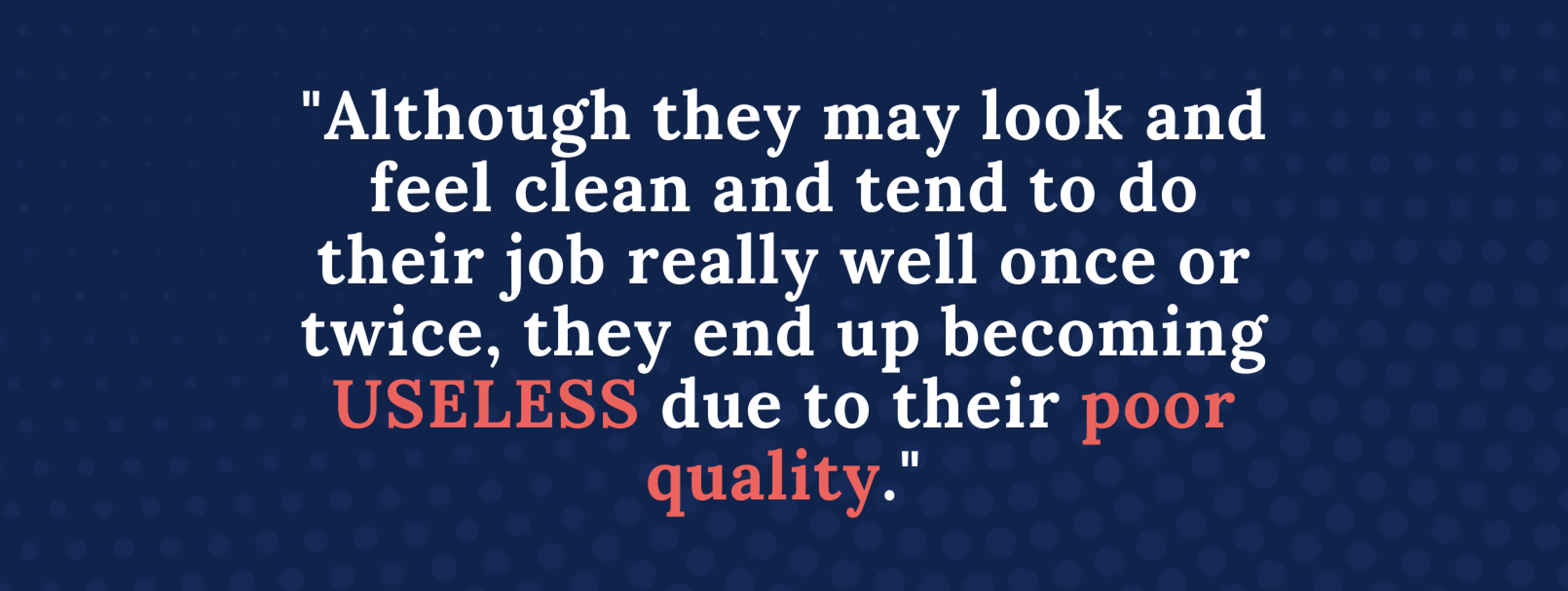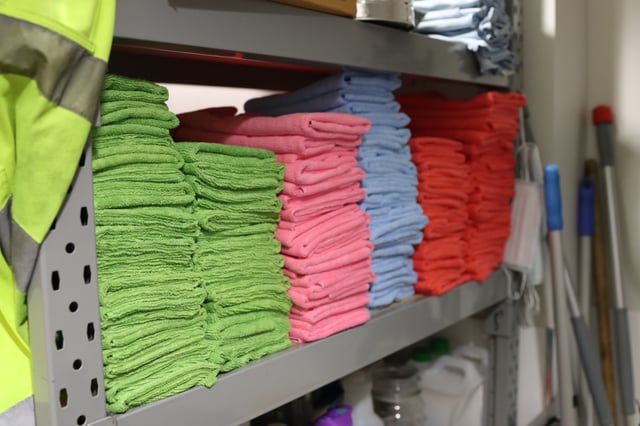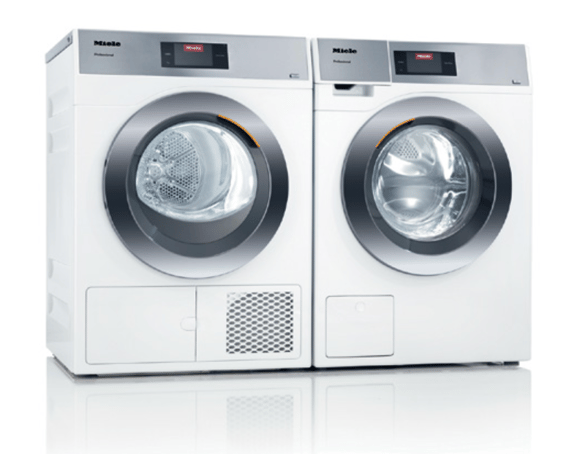Cleaning Tools & Technology | Educational Articles | Industry Realities & Risks
Are Your Commercial Cleaners Using Dirty Cloths?

Have you ever wondered whether the cloth your cleaner is using is actually clean? You may have had this thought when you've seen your cleaner using what seems to be a dirty cloth.
Have you also wondered where the cloth has been used before? Has it been used in a toilet? How can I tell if the right cloth is used in the right area?
You're probably wondering, "so where are you going with this?"
Well, imagine watching somebody take a cloth and clean a toilet and then wipe down a kitchen bench with the same cloth.
Does that turn your stomach? Because it turns my stomach...that's gross!
Well, the solution to this is cloth management.
Did you know that if microfibre cloths are not maintained properly, it can lead to cross-contamination of germs in the workplace and possibly lead to illness?
Although microfibre cloths are not difficult to use or maintain, many cleaning companies or cleaners within the commercial cleaning industry do not know the risks that come with misusing and laundering a microfibre cloth.
But don't worry - you are in luck! At In-Tec, we have guided current and potential clients for years about the risks of using dirty cloths and why cloth management is important. We understand what procedures and methods need to be in place for microfibre cloth management. As improper care can be a costly mistake for you, your employees, and your facility.
In our continuing efforts to educate our existing and potential clients, we have provided 3 factors to consider when asking yourself, “are the cloths my cleaners are using actually clean?”
1. Qualities of Microfibre
2. Colour Coding
3. Laundering Process
In this article, we will go through what makes a good quality cloth, what colours your cleaner should be using and where (In-Tec is a little different when it comes to this), and how they should be washed and why a domestic washing machine does not cut it.
What is a microfibre cloth?
To begin, I'm going to get a bit sciency here.
As the name indicates, microfibre cloths are made from very small fibres. In terms of scale, microfibres are half the diameter of a strand of silk, one-third the diameter of cotton, and one hundred times finer than a human hair.
A fibre can only be categorised as microfibre if it is less than 1dtex (mass in grams for every 1,000 meters).
So, what are microfibre cloths made of?
A microfibre cloth is made of plastic – a mix of polyester and polyamide. It has a split fibre mechanism that allows it to attract and capture dirt, bacteria, and viruses leaving surfaces looking and being clean.
Step one - the different qualities of microfibre cloths
To better draw a picture for you, imagine the thread counts of sheets. We all know that the higher the thread count, the better the quality of the sheet.
The same can be said for microfibre cloths.
Believe it or not, there’s a large difference between good and bad quality microfibre cloths.
One thing you can do first off is take a microfibre cloth that your cleaner uses, put it up towards the sunlight, and stretch the cloth. If the microfibre is hard to stretch and you can’t see a lot of sunlight coming through, then it is a high-quality cloth.
However, if you notice the cloth stretching easily, then it is a poor-quality microfibre cloth – usually because it is above the 1dtex.
Poor quality microfibre cloths also have a lot fewer fibres than high-quality cloths. Although they may look and feel clean and tend to do their job really well once or twice, they end up becoming useless due to their poor quality (this is even if the microfibre cloths are washed at 65 degrees). For instance, a microfibre cloth from Bunnings will fully remove a coffee spill. However, it won’t remove the microbial dirt (the stuff you can’t see such as bacteria) and has a very limited lifespan.
Good commercial cleaners use quality microfibre cloths that aren’t available to the general public. They are typically purchased through wholesale suppliers such as Rubbermaid, Greenspeed, or i-fibre.
How do you know the microfibre cloths are doing their job?
ATP tests are a good way of analysing whether your cleaners’ cloths are actually cleaning surfaces. These tests test the bacteria load counts on surfaces and determine whether cleaning methods are working effectively. If a microfibre cloth is not clean, the bacteria load count will be extremely high which means that the microfibre cloth isn’t capturing all the microbial dirt. Instead, it’s pushing the dirt around.
Are your cleaners conducting ATP tests?

Step two - colour coding cloths
Have you ever wondered where your cleaner's cloth has been used before? Have they been using the same cloth for the toilet and the kitchen?
We're going to start this step off with a scenario that you may have seen occur in your own facility.
Your cleaner has visited another site before yours and has cleaned the toilets with a red microfibre cloth. Now, that cloth has gone into a washing machine and unfortunately, hasn’t been washed at the correct temperature. That cloth has now turned up at your site (which remember, hasn’t been washed properly and was previously used on toilets), and is now being used to clean your kitchen bench. And yes, as you read on, a red cloth should not be used like this. Although that cloth may have looked clean, it has faecal matter embedded in it which can fall out onto your kitchen bench.
Yuck, right?
Now, this cross-contamination could have been avoided if 2 vital steps were followed.
1. The cloth was washed at the correct temperature
2. The cloths were colour-coded. For instance, the right colour cloth is used in the right area
Here at In-Tec, our cleaners have colour-coded cloths for designated areas.
Red microfibre cloths are used for toilets and urinals.
Pink cloths are for everything else in the bathroom such as cubicle walls – stuff that shouldn’t have human waste on it.
Blue cloths are used for kitchens (think water for blue).
Green cloths are used for general areas within the workplace (think green for safe to use).
Ensuring your cleaners have colour-coded microfibre cloths is critical as they develop a routine in using the correct cloths in the correct assigned area. This then reduces the amount of cross-contamination within different areas of the workplace.

Step three - laundering process (washing of cloths)
Making sure efficient laundering procedures and protocols of microfibre cloths is essential. If the cloths are not maintained properly, there will be a quick deterioration in the effectiveness of the cloths – they will be spreading the dirt and bacteria around on surfaces instead of capturing and removing it. If not properly taken care of, microfibre cloths can be a breeding ground for bacteria and cross-contamination.
A proper cleaning company or launderer will wash the microfibre cloths at 65 degrees to heat up the fibres enough where they begin expanding. As the fibres expand, the dirt between the fibres is pushed out of the cloth, which results in a clean, dirt-free cloth ready for use again.
Microfibre cloths that have had to clean up bodily fluids such as vomit, blood, and urine need to be washed at 95 degrees. So, cloths that clean toilets and urinals must be washed at that temperature to ensure they are clean.
What should microfibre cloths be washed in?
Did you know that a domestic washing machine should not be used for washing microfibre cloths?
One of the main ways of guaranteeing your cleaners’ cloths are clean is to confirm they are washed in an Australian Standard Approved commercial washing machine [AS/NZS 4146:2000].
But you might ask, what actually is the difference between a domestic and commercial washing machine?
Just so you know, I'm going to get back into the nitty-gritty here again!
Imagine you boil some water at 60 degrees and then pour it in a stainless-steel jug. What you’ll notice is that what was 60 degrees, is now dropping in temperature considerably to 30 to 40 degrees.
This is what happens with your domestic washing machine.
If you think about your washing machine at home, you usually have the option to select different water temperatures. Let’s say you select 60 degrees. Now, most washing machines usually don’t have a heat pump. So, when the water enters the washing machine it hits a cold drum which is typically made from metal or plastic. This results in the water dropping from 60 degrees to about 30 to 40 during the whole wash and rinse cycle.
So, if your cleaner is washing microfibre cloths in a domestic washing machine, the water will not be able to heat up to reach 65 degrees, let alone 95 degrees. Therefore, what may look like a clean cloth is not actually clean if you were to put it under a microscope. Instead, the cloth will still have dirt and bacteria captured within the thousands of fibres. This is because the machine will not be able to hold the same temperature during the entire cycle.

Whereas a good quality commercial washing machine, such as the ones from Miele (picture above), have the capability of keeping the water at 65 degrees for the entire wash and rinse cycle via a heat pump. If the water in the machine was to fall below 65 degrees at any time, the machine has a sensor that can abort the whole load. The machine will immediately stop, empty itself, and open the door before you must start the cycle all over again.
Microfibre cloths must also be washed separately in the machine. If they are washed with materials that tend to lint such as towels, the microfibre will capture the lint and affect its efficiency.
Here at In-Tec, from time to time, we conduct ATP tests when evaluating new microfibre brands or existing cloths. This is to ensure they will do their job properly and remove all microbes from surfaces.
You want your cleaning company to be willing to do ATP testing on their microfibre cloths.
You want them to be willing to put themselves to the test.
Does your current cleaning company know how to perform an ATP test?
How do I know if my cleaners cloths are clean?
The most important information to take away from this article is to go out and check whether your cleaners have a cloth management procedure in place. If they don’t follow any of the 3 practices, then all the cloths that are being used to “clean” surfaces in your workplace are actually dirty and not doing their proper job.
Your cleaner needs to be:
- Following the correct laundering process - using the correct washing machine
- Colour coding cloths to limit the risk of cross-contamination
- Using high-quality microfibre cloths
At In-Tec, our commercial cleaners recognise the importance of cloth management and continually adhere to the 3 procedures set out in this article. All our cleaners undergo detailed training in all aspects regarding cloth management.
If you want to get in touch with the team at In-Tec, schedule a call with one of our experienced team members.
